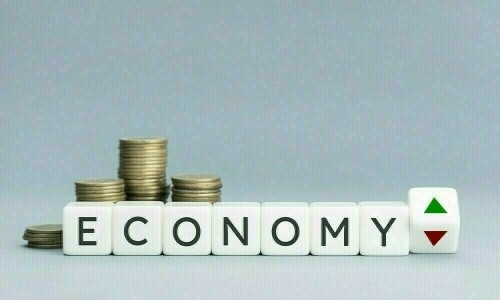Pakistan’s Economic Outlook: Recovery Expected in Second Half of FY25
The State Bank of Pakistan (SBP) has released its half-yearly report for 2024-25, indicating that Pakistan’s economy is anticipated to regain strength during the second half (January-June) of the current fiscal year. This positive forecast comes despite ongoing difficulties in the agriculture sector, with improvements in manufacturing, services, and external trade contributing to a more favorable outlook.
The economy experienced a 1.5% expansion in the initial six months of FY25, compared to the 2.1% growth recorded during the corresponding period last year.
“Although growth decelerated in the first half of FY25 compared to the previous year, recent data from high-frequency indicators suggests that economic activity is picking up pace,” the central bank stated in its report, titled ‘The State of Pakistan’s Economy’.
Key indicators suggest that the slowdown observed in the first half is giving way to a modest but consistent recovery in economic activity, bolstered by more relaxed financial conditions and lower global energy costs.
The projection for real GDP growth remains steady at 2.5–3.5% for FY25.
According to the SBP report, recent data revealed that the Purchasing Managers’ Index (PMI), a key indicator of manufacturing activity, increased to 53.0 in February 2025, marking its highest level since August 2022.
Simultaneously, domestic demand indicators, including sales of automobiles, cement, and petroleum products, showed increases, while exports of high value-added textiles continued their upward trend.
These developments imply a revitalization of the industrial and services sectors recently, which are anticipated to drive economic growth in the months ahead.
However, the agriculture sector remains an area of concern. The latest estimates point to a smaller-than-expected wheat harvest, which poses a downside risk to overall gross domestic product (GDP) growth.
Consequently, “the real GDP growth projection remains unchanged in the range of 2.5–3.5% for FY25,” with risks skewed to the downside due to underperformance in agriculture and potential fiscal tightening.
Regarding domestic finances, fiscal accounts showed progress in the first half of FY25, primarily due to substantial profit transfers from the SBP and controlled subsidy expenditures. Nevertheless, the fiscal deficit forecast remains at 5.5–6.5% of GDP, as risks of revenue shortfalls persist, according to the report.
Inflation, on the other hand, is following a sharp downward trend. With global and local commodity prices decreasing and the fading of a high base effect, “average inflation for FY25 has been significantly revised downward to 5.5–7.5%, from previous estimates of 11.5–13.5%,” the SBP noted.
The existing monetary and fiscal policies, along with ample food reserves, are expected to keep inflationary pressures in check in the near future.
Externally, “the current account balance for FY25 is projected to be in the range of -0.5 to 0.5 percent of GDP.” This is supported by stronger-than-anticipated “growth in workers’ remittances, reduced commodity prices, and sustained export momentum.” However, with imports increasing alongside industrial demand, the economy remains susceptible to any sudden increases in global commodity prices.
Looking ahead, the economic outlook faces significant external uncertainties. Increasing global protectionism, ongoing geopolitical tensions, and the potential resurgence of global inflation—driven by disruptions in supply chains and tariff-induced cost pressures—present considerable challenges for emerging markets such as Pakistan.
While domestic recovery seems to be gaining momentum, particularly in non-agricultural sectors, sustained progress will depend on both responsible policy management and the evolving global economic environment.



Comments (0)
No comments yet. Be the first to comment!
Leave a Comment